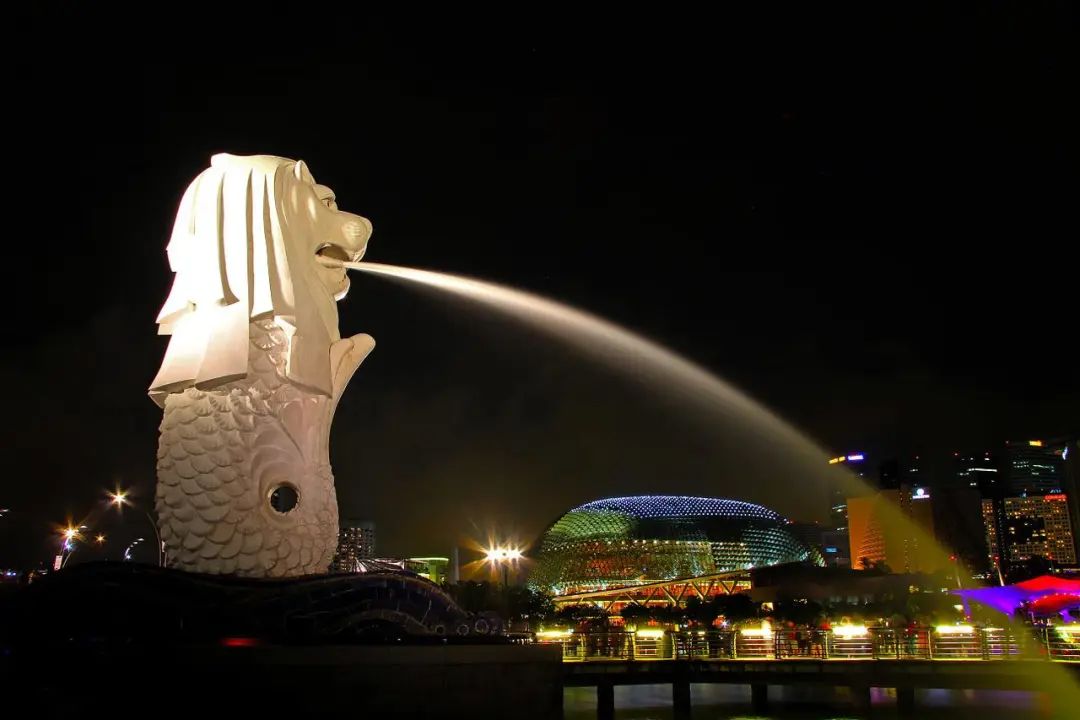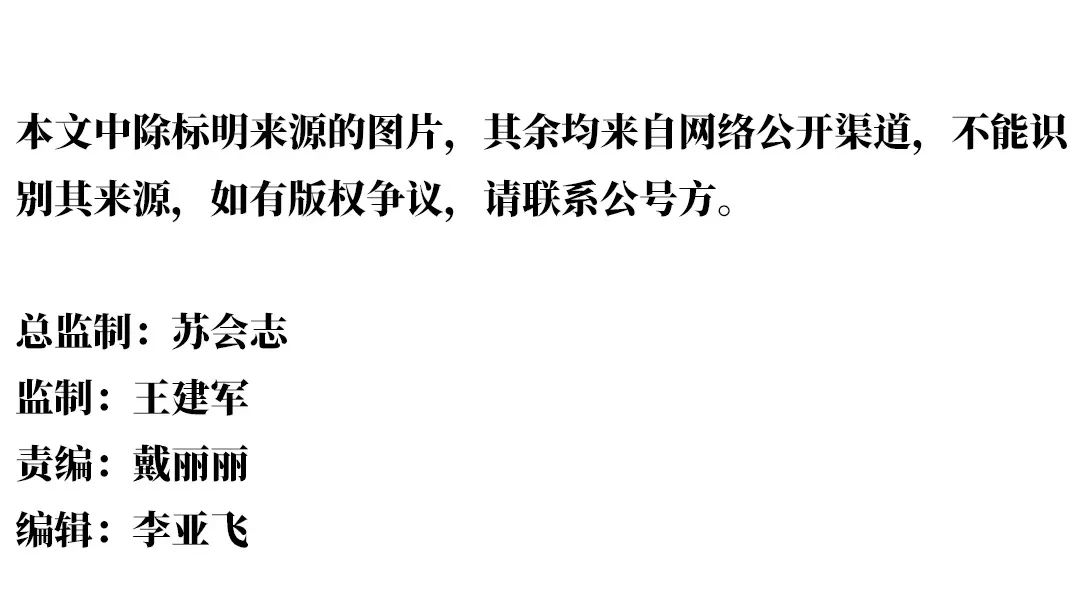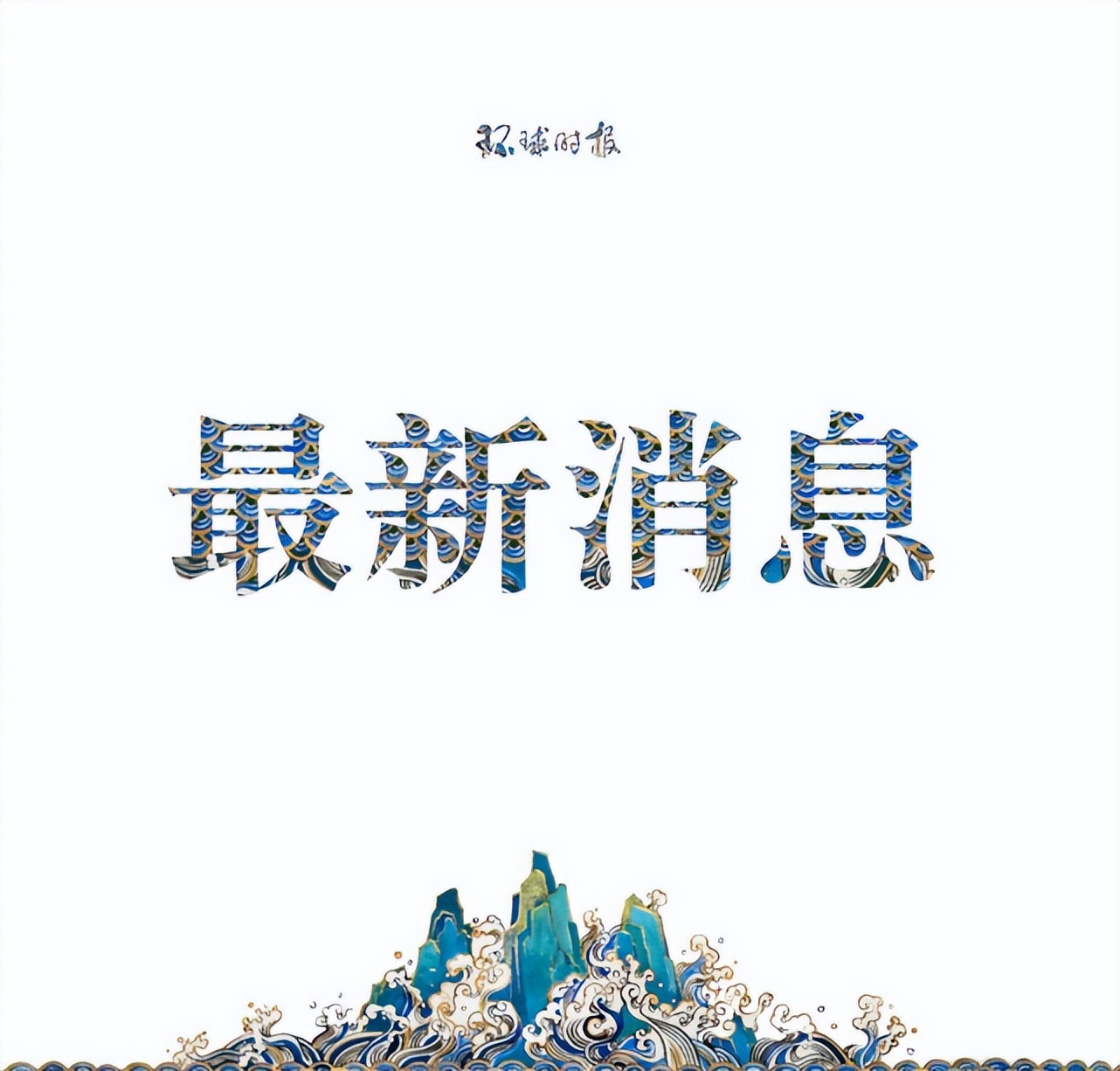It is difficult to buy water from the neighbors.
Author:Look at the think tank Time:2022.07.18
The Nanyang Island country Singapore often shows short shower. After the rain was washed, the green plants, flowers and flowers with water and flowers on the streets became interesting with the small river and water moisture of Qing Lingling, making the whole city look vibrant and new.
In such a scene, it is difficult for people to imagine that this is a country with extremely scarce freshwater resources.
Wen | Nan Xinyi
This article is reproduced from the WeChat public account "Geo-Valley". The original first published on May 18, 2022. The original title was "Buying water from neighbors is difficult to get water. How can Singapore achieve freedom of drinking water? ", Does not mean looking at the view of the think tank.
1
Inadequate
Singapore is located near the Malacca Strait. The area is dominated by the tropical rain forest climate. The annual precipitation is as high as 2350 mm. It can be said that it is the most waterless area. But for Singapore, which has a land area of only 697 square kilometers, so much rain is just a hurry. There is no complete liquid river in Singapore, and lack of sufficient lakes. Freshwater that falls from the sky every year can only be turned away into accumulated water and cannot be collected and used.

Therefore, Singapore pays special attention to water resources. It calls every drop of water within the territory as water resources. The country does not have a strict water source protection area, and only the water collection area with the ditch rivers in various areas. The coastal Bay inner lake after the formation of the coastal embankment and the seawater is one of them. The surrounding area is the most prosperous business district of Singapore.
However, it is not enough to have a water collection area. Singapore's geological conditions are fragile. For decades, the country has faced the problem of land sedimentation. In the small river, it was difficult to save some fresh water, and it was quickly polluted by the seawater. It can't be kept in the sky, and it can't be drunk on the ground. The bright and beautiful Singapore per capita water resources in Singapore are only 211 cubic meters. The world is the best in the world. Compared with the 20,000 cubic meters of Malaysia next door, it is a little witch.
Back to 1819, the British Stanford Raffles scratched the region in the southwest of the Singapore River as a Chinese residential area. During that period, there were no tap water equipment in Singapore. The water required by the island had to be hit from the wells of Anxiangshan and Shibing Street, and then transported to the urban area with a ox cart. So this area provided with ox carts of water is called ox cart water.
Until 1823, Singapore's second British stationed official Caifufu had proposed to build a reservoir and water supply system. However, the proposal has been put on hold until the Chinese charity Chen Jinsheng donated 13,000 yuan in 1857 to fund the construction of the Merida storage pool. Although Chen Jinsheng's donation made more people pay attention to the problem of water, the construction plan of the reservoir has been dragged into Singapore a few years later, and it has experienced a serious drought before it is truly implemented.
However, as the foreigners increased a lot after the end of World War II, only one pool could not meet the problem of drinking water for so many people. There is really no way in Singapore, let's find the neighbor next door Malaysia to buy water.
In 1961, the Singapore Autonomous State Government and the Johor government on the other side signed a water supply agreement. According to the agreement, Singapore can pump the water unlimited from the Pollai storage pool, Dibanhe and Shigu River every day for 50 years. This is 50 years. The agreement has been expired in 2011. In 1962, Singapore signed another 99 -year -old water supply agreement with Johor. This agreement allows Singapore to have the right to draw up to 25 million gallons from the Johor River every day. At the same time, Singapore will provide the processing of purification to Johor, with a water volume of 2%of the total water drawing from Johor within 24 hours.
Under two agreements, Johor needs to transport 350 million gallons of raw water to Singapore every day. The price at that time was 3 cents every 1,000 gallons, which resolved about half of Singapore's water resources gap. In 1963, Singapore simply joined Malaysia and could drink water for free.
But the good times did not last long. In 1965, the relationship between Malaysia and Singapore broke, and the new horse was divided. On August 9, 1965, Singapore broke away from Malaysia and became a republic with sovereign independence. The "Singapore Independence Agreement in 1965" stated that the Malaysian government must ensure that the Johor Government complies with the terms of the two water supply agreements. At the same time, the Singapore government must also ensure that the Public Utilities Bureau adhere to the same terms, and the agreement is also filed by the United Nations.
Under the leadership of Lee Kuan Yew, Singapore developed rapidly, and the economy soon surpassed Malaysia, and psychological imbalances on both sides of the strait were born. The Malaysian side began to take water for an agreement, accusing the two agreements signed under the influence of British colonists, and the content terms were too partial to Singapore.
For example, when signing an agreement, there is no water plant in Johor and cannot handle raw water. It can only export raw materials to Singapore. After the latter processs these raw water, then repurchase it. At that time, the price of water raw water in Johor at that time was 3 cents per 1000 gallons, and the repurchase price of buying water from Singapore was 50 cents per 1,000 gallons. Some media broke the news that between this tap water back and forth, Singapore's net profit was $ 600 million. The added value of the industry allowed Singapore to occupy, which more and more provoked the nerves of the Malaysian government.
However, Singapore was unmoved, and the agreement was signed in one bite, and it was not allowed to regret it, and it was pointed out that the lack of water purification technology in Johor is Malaysia's own responsibility. Singapore has given manpower and electricity to help handle water to earn some labor costs. There is no fraud in Malaysia. The problem. On both sides, they couldn't hold a saliva battle with each other. They also wanted to go to the International Court for a while, and they did not usher in a turnaround until the 1990s. 2
Anterior road
In 1990, the Public Business Bureau and Johor signed an agreement to build a Lingui Dam by Singapore. The construction and operating cost of the dam reached 300 million yuan, and the facilities were owned by Malaysia, while the Johor River Water Factory of the Singapore Public Bureau was built downstream of the Johor River. Due to the win -win situation, the dispute between the new horse water supply has temporarily eased.
The Lin Gui storage pool is the main source of water in Johor. The water here touched the lifeblood of the people of the two places. In order to ensure the sustainability of the water source, Singapore has now spent 1 billion yuan to help to ensure the water source there, of which Lin Guiba is the largest project. The project not only maintains the stability of the water source, but also ensures the water storage capacity of the Lingui storage pool. At present, more than half of Singapore's water comes from the Johor River and 17 storage pools in Singapore.
However, Singapore ’s labor and labor failed to solve the dispute with Malaysia's water supply. This situation has reached more seriously during the administration of Mahathir. Singapore and Malaysia repeatedly had disputes on the water supply agreement. The Malaysian government always talked about the problem of water difference and asked Singapore to spend more money to make less money.
Mahathir even believes that the water price of 3 cents for 3 cents per 1000 soup is almost equal to free water supply to Singapore, so it is required to increase water prices. Singapore explained that as the country ’s industrial costs rose, it was already paid for 50 cents per 1,000 gallons that year. The issue of water supply renewal was temporarily put aside.
Entering the 21st century, Johor Water source began to be threatened by pollution because of industrial development. Can Johor continue to ensure that the water supply affects Singapore's nerves. Furthermore, New Malaysia may have a longer -lasting hot climate in the future, and it will inevitably affect the supply of water sources. Singapore's daily water demand is 430 million gallons. With the increase in population and the needs of economic development, the demand for water use is expected to double in 2060 to about 860 million gallons. In other words, after 40 years, Singapore's water supply supply must also be doubled to meet the water consumption at that time.
In addition, the water supply agreement signed in 1962 will expire in 2061, which will also lead to more uncertainty in Singapore's water supply. All kinds of challenges have allowed Singapore to pay attention to the acquisition of water resources. Li Guangyao is thinking about how to make a small pellet country such as Singapore achieve water supply self -sufficiency. The feasible way at that time was to recycle waste water.
3
Independent
As early as 1974, Singapore's first experimental water supply recycling plant was established in Jurong. However, the technical cost of purifying wastewater was too high and unstable. Until 2002, the Singapore Public Business Bureau officially launched the regenerative water plan and named these water treatment "newater", which means "new water". Under the persecution of the water shortage crisis, Singaporean scientists successfully allowed the water quality of the recycled water to the world -class drinking water standard.
The so -called freshwater is to further purify the government's unified centralized treatment and industrial sewage through the use of advanced micro -filtration, reverse osmosis membrane, ultraviolet sterilization and other technologies, and formed high -quality purified water. Most of the new water water is used in industrial production, and a small part of the ponds and the raw water of the tap water are mixed. After further processing of the water plant, it enters thousands of households through tap water pipes to become drinking water for ordinary people's homes.
Since then, Singapore has continued to increase, covering one after another. In 2004, Bedok and Krani were put into operation in two other recycled water plants. Before 2007, Seletar, the third new water plant, was also officially operated. The water supply of regenerative water was increased to about 10%of Singapore's total water supply. Beginning in 2010, the fifth freshman water plant, Zhangi, has gradually been put into use. It is estimated that by 2060, the year before the end of the signed water supply contract with Malaysia, the recycled water will account for 50%to 55%of Singapore's nationwide water consumption.
In 2010, Shengke Industrial Group, a subsidiary of Singapore's largest state -owned enterprise, invested 180 million US dollars to build Singapore's largest freshman water plant -Shengke Freshman Water Plant. The factory is also one of the largest recycling water plants in the world. At present, about 230,000 tons of fresh water is produced per day, which can provide about 15%of Singapore's water. However, regeneration water can only meet half of Singapore's water supply, so Singapore also turns its eyes to seawater.
In 1998, Singapore established the first seawater desalination plant and began to explore seawater desalination. In September 2005, Singapore's first seawater desalination plant was officially opened. It can produce 136,000 cubic meters of fresh water per day, marking Singapore's fourth faucet. In 2013, the second seawater desalination plant Daquan seawater reference plant was completed, and 318,500 cubic meters of fresh water can be produced per day. The third seawater desalination plant in 2018, the Dashi Sea Danishment Plant, was officially put into operation. The Jibao Binhai East Sea Danishment Plant, which was built in 2017, was the fourth seawater desalination plant in Singapore. It was put into operation on June 29, 2020, and officially opened on February 4, 2021. This is the country's first large -scale dual -mode seawater desalination plant. In short, it can treat water from the coastal reservoir when the rainfall is abundant. When the rainfall in the dry season is insufficient, the seawater of the Singapore Strait can be drawn for dilute.
Compared with the previous seawater desalination plants, the new water plant in Binhai East can save up to 15 % of energy. It is also the smallest seawater desalination plant in Singapore, covering an area of only 2.8 hectares. The new factory adopts innovation method, such as using ultraviolet rays as the main sterilization method to replace traditional chlorine disinfection, thereby saving space occupied by chlorine pools. On April 17 this year, the Umbnarian Island Sea Dilute Plant opened and became the fifth seawater desalination plant in Singapore. It is estimated that in 2060, the diluting seawater will meet at least 30%of Singapore's water supply demand.
However, it is difficult to meet Singapore's water demand with fresh water and dilute seawater. As early as 2002, the Singapore Public Business Bureau proposed the "Four National Taps" program. Newborn water and dilute seawater are used as Singapore's four major sources of water in the future.
In 2006, Singapore also proposed "ABC (Active, Beautiful, CLEAN, meaning active, beautiful, clean) to share water sources for the whole people". The first phase of this plan is to develop 17 seven -seater storage pool in Singapore, 32 major river channels, 32 major rivers, and main rivers. At the same time, facilities such as wetland parks are built to cultivate water sources. Under this plan, in addition to the manufacture of recycled water, Singapore also further develops seawater technology. It is expected that the seawater and regenerative water will be added in 2060 to reach 80%of Singapore's water supply.
On the other hand, Singapore is also constantly improving the awareness of water -saving water saving, calling on residents to save 10 liters of water every day. In order to reduce residents' water, Singapore has also developed a set of efficient tap water transmission and computing systems to continuously reduce the amount of water for residents. It is planned to reduce the per capita water consumption of Singapore by 2030 to 140 liters per person per day. Singapore also raised water prices in 2017 and 2018, and levied water -saving taxes to strengthen Singaporeans' awareness of water saving. Therefore, "saving water" has also become the "fifth water throat" of Singapore.
4
Challenge
When the Singaporeans solve their own drinking problems, the freshwater supplier next door, Malaysia, did not "idle". Malaysia could only buy water from Singapore because there was no freshwater treatment capacity. By 2002, the Johor government announced its own freshwater treatment plant and would stop repurchasing water from Singapore. The business relationship that was originally turned into Singapore has become a complete relationship between Malaysia, and Malaysia has threatened to increase the price of water. Once Singapore has any dissatisfaction, Malaysia immediately threatened to break the water.
Faced with such unreliable suppliers, Singapore can only prepare both hands, while negotiating with Malaysia to appease Malaysia as much as possible; on the other hand, there are mostly contact with Indonesia to buy water from Indonesia. In June 1991, Singapore and Indonesia reached an agreement, stipulating that the two parties cooperated in the supply and distribution of freshwater, with a validity period of 50 years. Singapore will obtain fresh water from Indonesia's Dan Dan Island at a price of 1 cubic meter. However, the water buying plan was once affected by the Asian financial crisis and the turbulence of the Indonesian domestic affairs bureau at that time. Now, due to huge costs and high engineering, this plan is still in the experimental stage.
However, with the various efforts of Singapore, in recent years, Singapore's water resource dependence on Malaysia has been reduced in recent years. No longer dare to despise Singapore casually. Survival survival in Singapore finally got rid of the title of poor water country and became one of the world's best water -strong powers.
Reference materials: a glance of water resources event book. Lianhe Zaobao; Four National, TAPS-PUB; Singapore Infopedia: Water Shortages and Rationing in Singapore; the revelation of Singapore's water industry leaping development.
Uncle Ku Welfare


- END -
Many positive infections in Shanghai are related to No. 148 Lanxi Road, adding 2 high -risk areas and several central risk areas

At 10:00 am on July 6th, the Shanghai Municipal Government News Office organized a...
Please pay attention to Hubei household registration!Just announced!Lack of teeth and inconsistent subsidies!End at 23:00!

Between the nine provinces and the rivers and lakesThere is a bustling called Wuha...